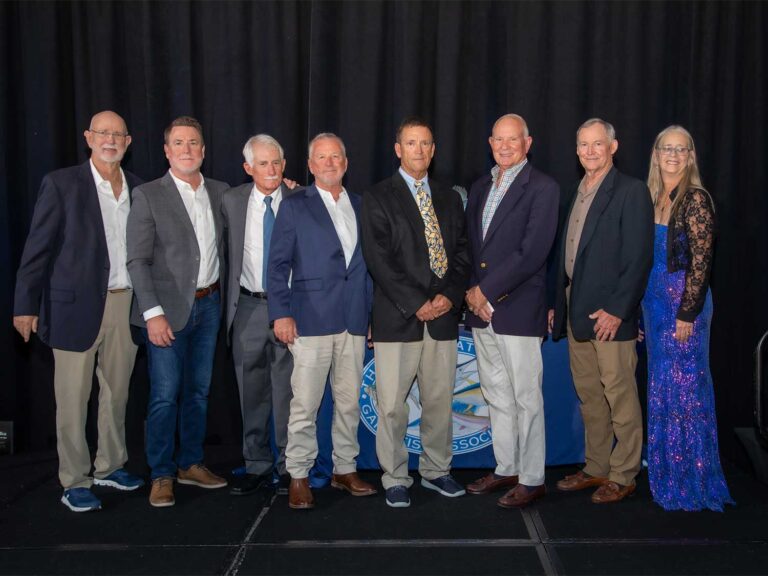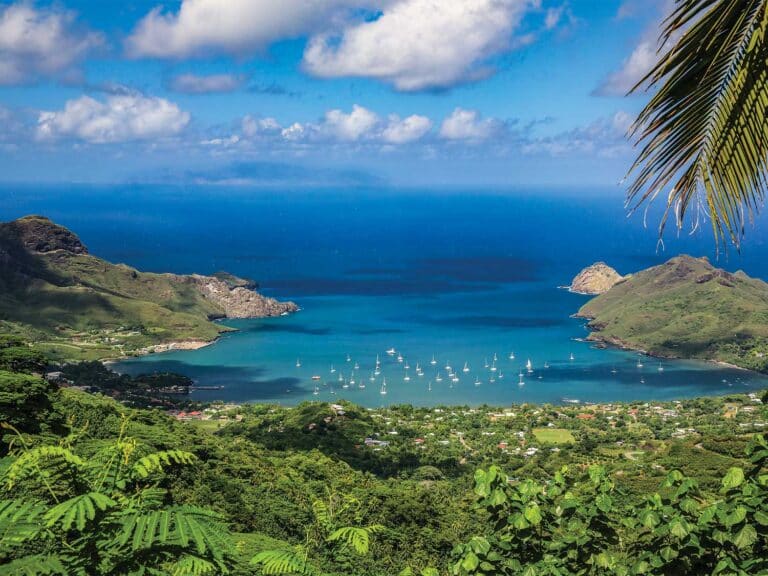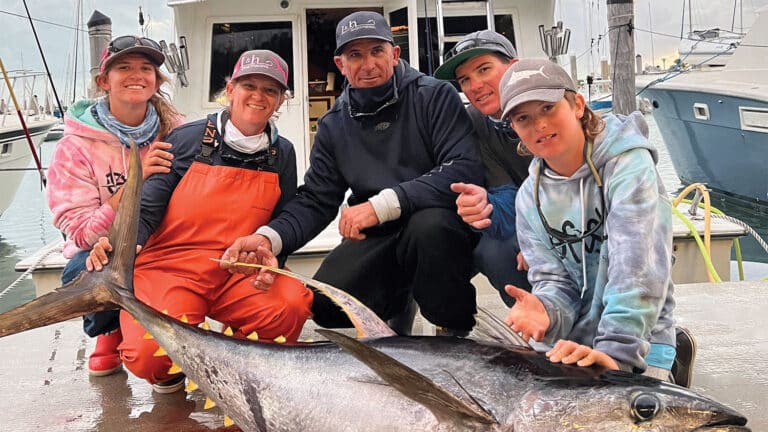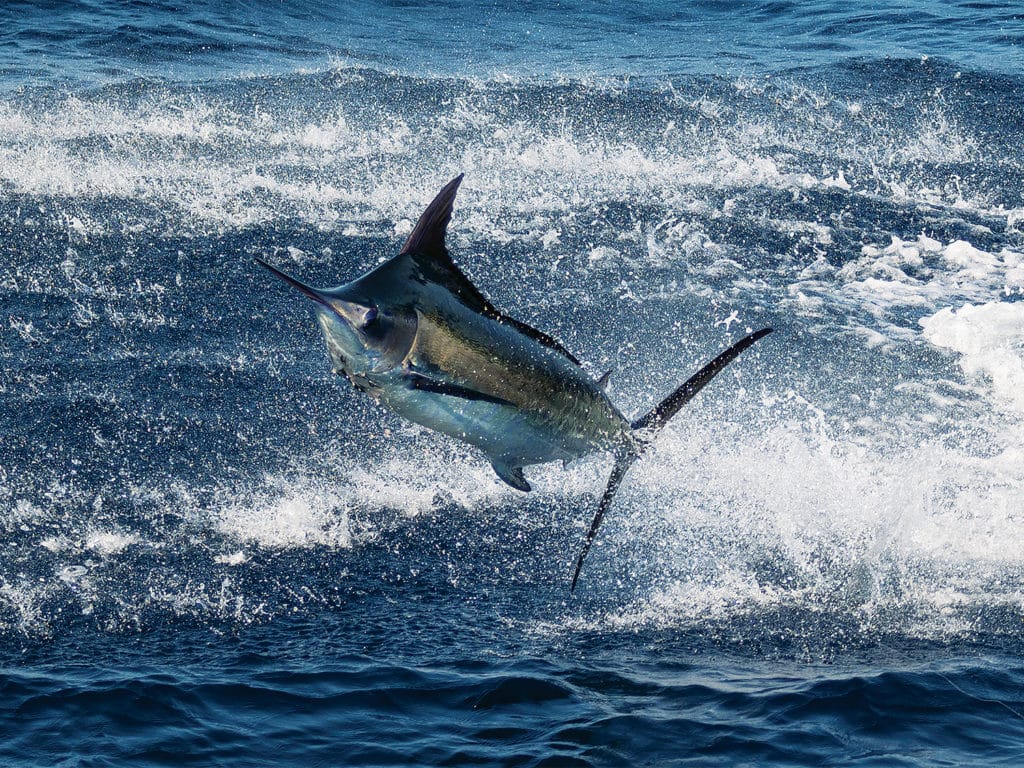
The numbers are simply staggering: 42,217 billfish releases in 84 days of tournament competition since 2004, for an average of more than 500 billfish releases per tournament day. Big days? Sure—how about the second leg of the series in 2016, where 43 boats racked up 2,752 sailfish releases in three days, for an average of 64 fish per boat? During that one you could release 75 sails in three days and not even make the top 10. Miss one or two bites and drop from first to third, or from third into obscurity—it happens every year. Incredible and incredibly consistent action, season after season, with some of the top teams on the hottest boats in the world. Those are just a few of many reasons why the Los Sueños Signature Triple Crown has achieved its current level of popularity, but the road to success certainly was not an easy one.
Los Sueños Resort and Marina is perched like an osprey on the central Pacific coast of Costa Rica, overlooking some grade-A prime fishing real estate. Bill Royster happened upon the property in Herradura Bay while traveling along the coast of Central America aboard his long-range sport-fisher during a sabbatical in 1991; at the time it was a 1,100-acre cattle ranch, nothing more. It took nine years and miles upon miles of red tape, but in 2000 the cornerstone for the marina was laid, and within a year it was open for business.
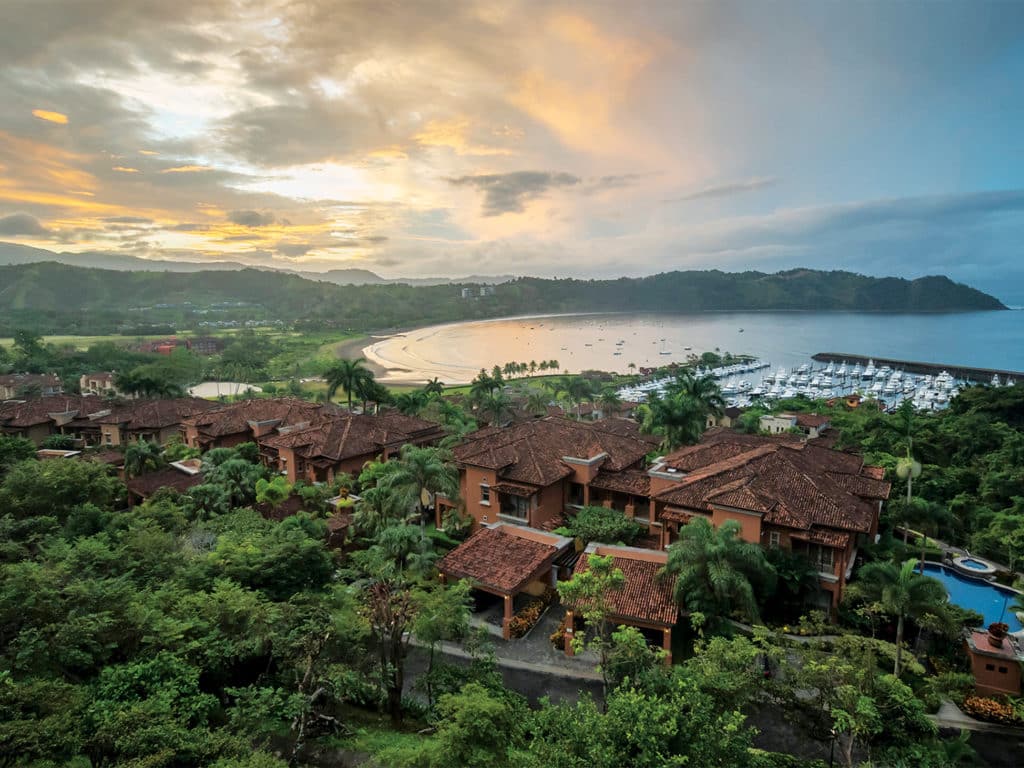
“When I first came to Costa Rica, there were no facilities for boats or marinas anywhere in the entire country,” Royster says. “I knew other fishermen would fall in love with the country, its people and of course, the amazing fishing, and before long, we starting seeing more boats from the US visiting the marina. The word was getting out. Back then, we were operating out of trailers with a dirt parking lot and had only about 50 slips.”
He continues: “By 2004, we had grown to over 100 slips in the marina, and the boats were out fishing hard every day. One afternoon, I was sitting in the El Galeon restaurant listening to some homeowners and captains bragging about how many sailfish and marlin they had caught. I said, ‘The only way to keep you guys honest is to create a tournament.’” Not only would a high-profile tournament series showcase the crazy-good fishing, but attracting a bunch of potential new property owners wasn’t a bad side effect either.
Watch: We show you the fastest way to rig a mullet for the dredge in this video.
Doc Austin—at the time co-owner of HMY Yacht Sales, who has since passed away—had already purchased a condominium and had a boat slip in Los Sueños, so the staff tapped his tournament experience and received Austin’s guidance and support along the way, which helped smooth the inevitable bumps in the road.
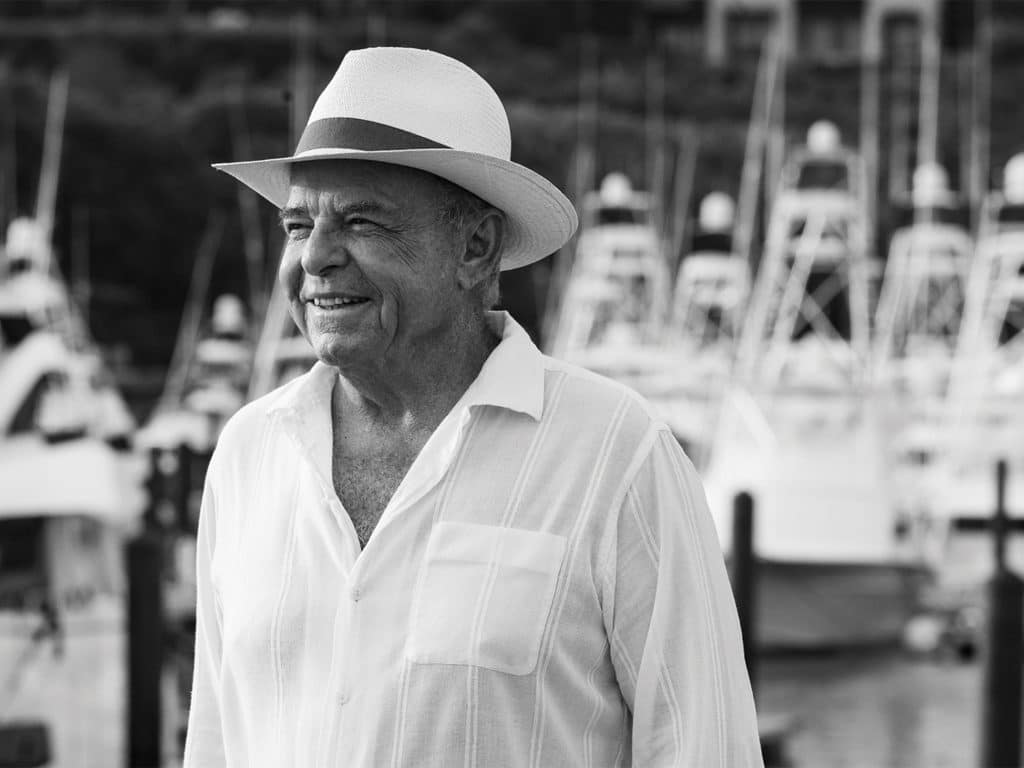
“A few years later, we helped convince the country to make circle hooks and the release of all billfish mandatory,” Royster says. “That was difficult for some to accept, but once we explained the importance of preserving this fishery instead of destroying it by killing a bunch of billfish with J hooks, they understood and came around.” Today the resort still funds several conservation initiatives through the Pacific Sport Fishing Association, a Costa Rican nonprofit dedicated to preserving the industry through legislation and education, as well as acting as a research center for the Gray FishTag program.
Change Is the Only Constant
Ask any successful tournament director, and one key concept they will all point to is the importance of listening to the participants and giving them what they want. In that first year, the 2004 HMY/Los Sueños series consisted of three legs: a ladies, an open and an invitational.
“At that point, nearly everyone thought Costa Rica was only a sailfish destination, but the tournaments proved that was incorrect because marlin were being caught every day as well. In 2009, during the second leg of the Signature Series, we had over twice as many marlin released as sailfish: 391 to 172, respectively. Because the marlin fishery was so good, we ended up creating a third event in December: the Marlin Invitational. We would get only 10 to 15 boats participating because of the holidays, however, participation in the Signature Billfish Series in January and February each year grew to over 40 boats. We then decided to combine the two in order to form the Signature Triple Crown, which has been running since 2014, with three events from January through March. We average 44 boats and maxed out at 58 boats in 2007.”
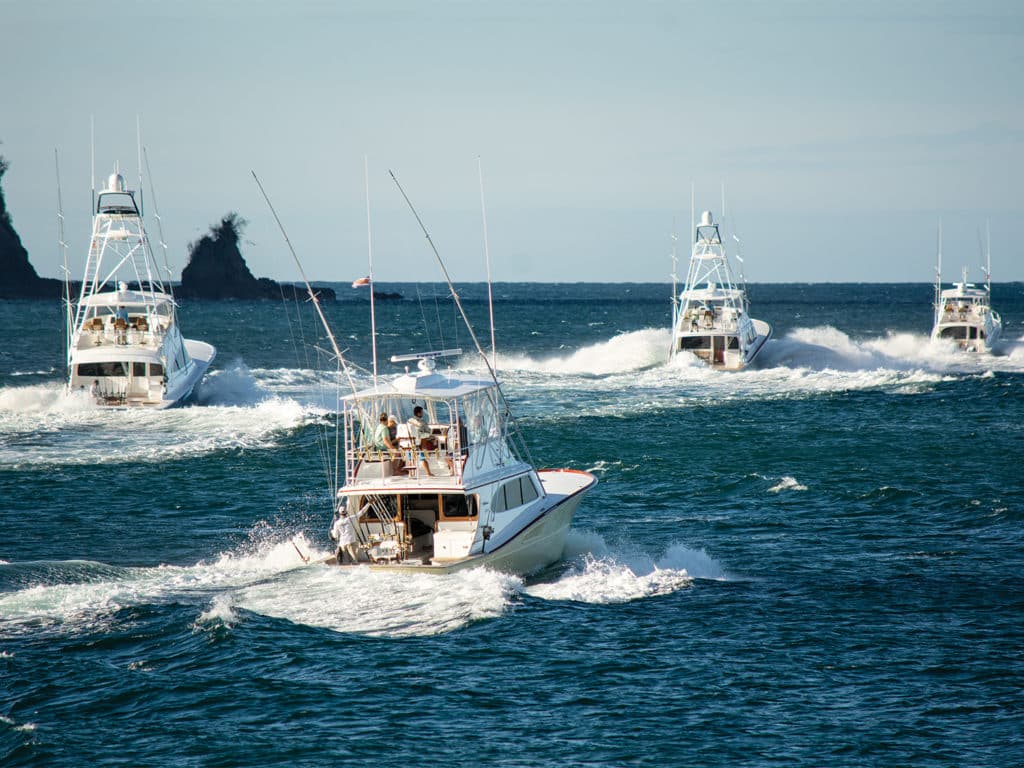
Along with the changes in format, rule changes have also played a part in the growth of the series. In the early years, anyone could enter, but the pendulum started to shift more toward those boats fielding professional teams, with full-time mates and captains manning the rods. Based on feedback from the participants, professionals were not allowed to fish for many years; here in the past few seasons, again based on feedback, the rules now allow one professional on each team. It’s a good mix that allows flexibility in scheduling a team of anglers, while not giving anyone an unfair advantage by stacking the cockpit with professional ringers.
Using certified observers was also a key decision in the growth of the series. “When the first tournaments took place in 2004, we had 15 to 20 boats,” Royster says. “By 2005, we were up to over 30, and since 2006, we have fluctuated somewhere between 40 and 50 boats. We initially held an open tournament for any boat in or out of the marina and no observers.” Because of the sheer quantity of billfish being released, sometimes more than a fish a minute, it just isn’t feasible to require photo or video proof of every release, so having qualified observers became essential to confirm each release, verify the species, and ensure compliance with IGFA and tournament rules. The International Game Fish Tournament Observer organization supplies qualified personnel for each leg, and locals are trained and certified to observe through the Los Sueños Observer Certification Program, which was started in 2009 by tournament director Ashley Bretecher. Many of the LSOCP observers have also chosen to be certified by the IGFTO, and have gone on to observe in other release tournaments in Central America and around the world.
Bretecher joined the Los Sueños staff in late 2001 and advanced through the ranks, becoming executive director of marketing and communications in mid-2005, when she was also tasked to head up the tournament series for the 2006 leg. Since then, Bretecher has adroitly navigated what can admittedly be a very tricky position for the past 15 seasons, thanks to her poise and professionalism. She is now the marina director as well, further increasing her visibility in the Los Sueños fishing community.
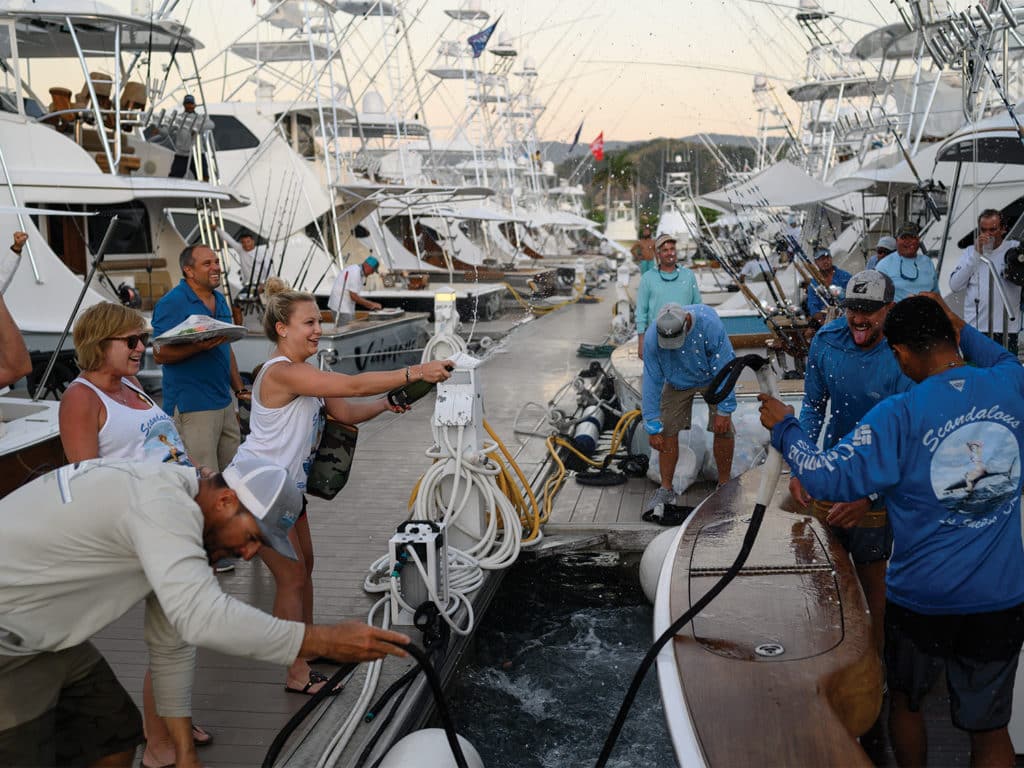
Two of the rules that have remained constant since the early years are the point structure and the boundary. In Los Sueños tournaments, sailfish are worth 100 points and any species of marlin is worth 500, placing a premium on converting those marlin bites to releases. Many a daily has been won or lost based on those critical bonus points. The establishment of a 50-mile fishing boundary from the resort also has helped maintain a level playing field, especially as the boats have become faster with each passing season.
As word spread and the resort’s reputation continued to grow, the docks soon resembled a who’s who of the international fishing community. Set amid one of the most consistent dead-bait marlin and sailfish fisheries in the world, with the backdrop of one of the world’s most luxurious marina resorts, the growth in popularity of the Signature Triple Crown continued.
Big Feb
As the teams gathered to fish the second leg of the Signature Series in late February 2016, it was clear that something special was about to happen. Sailfish were present in numbers that had not been seen off Costa Rica in decades, and the timing was perfect. The January leg produced 1,961 billfish releases; the Pacific was primed to cut loose.
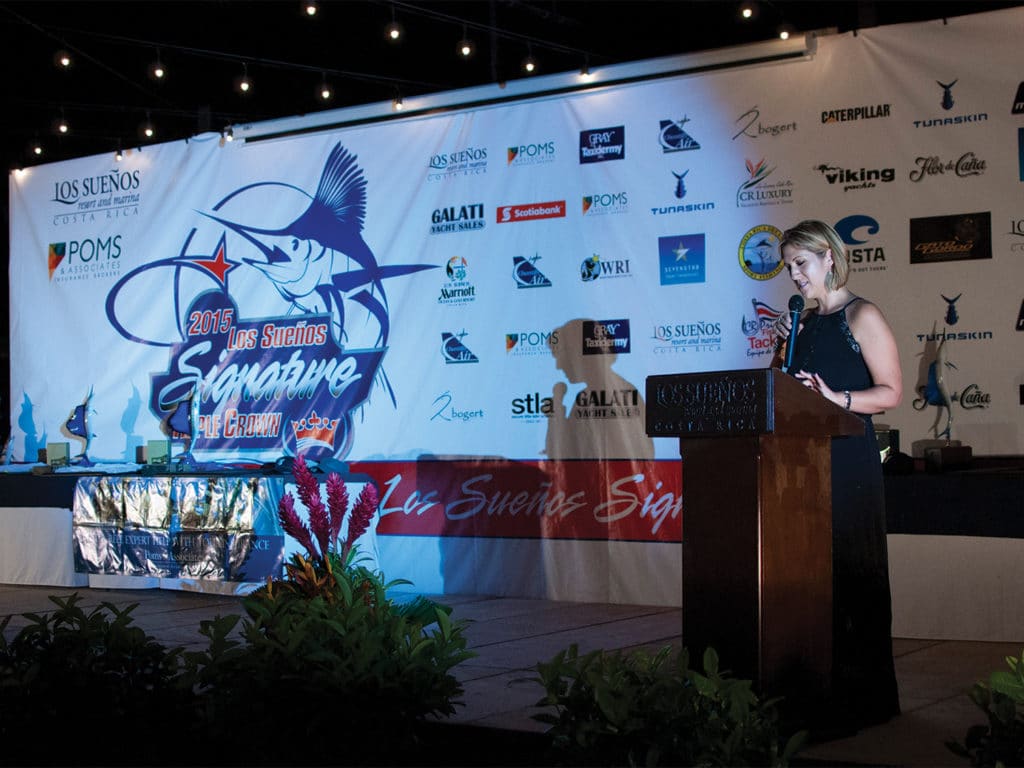
In just three days of fishing, the 43-boat fleet released 2,753 sailfish and one marlin for an incredible average of 64 releases per boat—a blistering pace of nearly two releases per minute throughout the event. Team Agitator finished in first with 87 sailfish releases, followed by Pelese in second place with 86 and Spanish Fly in third, also with 86. Incredibly, Sea Angel also scored 86 sailfish releases. The finish was so close, they actually tied on their time of last release, forcing the tournament committee to go back to the second-to-last release to determine the third-place winners. It took 75 releases just to make the top 10 on the leaderboard. To say that’s hot fishing is perhaps the understatement of the decade.
So what does it take to be successful in such a highly charged and uber-competitive series? Capt. Tony Carrizosa should know: With six first-place finishes, he has won more tournaments in Los Sueños than anyone else to date. Carrizosa first came to Costa Rica in February 2001 as a mate aboard Stephanie Lee, a 63-foot American Custom Yacht. “I was working on Sharkey’s Revenge in St. Thomas, but Stephanie Lee needed a Spanish-speaking mate for their upcoming travel to the Pacific and eventually to Costa Rica,” he says. By May 2002, he was running the boat as captain; in 2007, he led the team to his first victory as well as the overall series Top Team honors that year. In 2011, he won again at the helm of Bob Hixson’s Game On; then Carrizosa joined Team Galati, leading them to victory in tournament legs in 2014, 2015, 2019 and 2020. He’s also done it fishing on several different boats, starting with the 63 ACY, a Viking 50 (winning twice), then a 66, a 58 and a 62—so much for the lucky-boat theory. This year, the team is back in a Viking 58 once again.
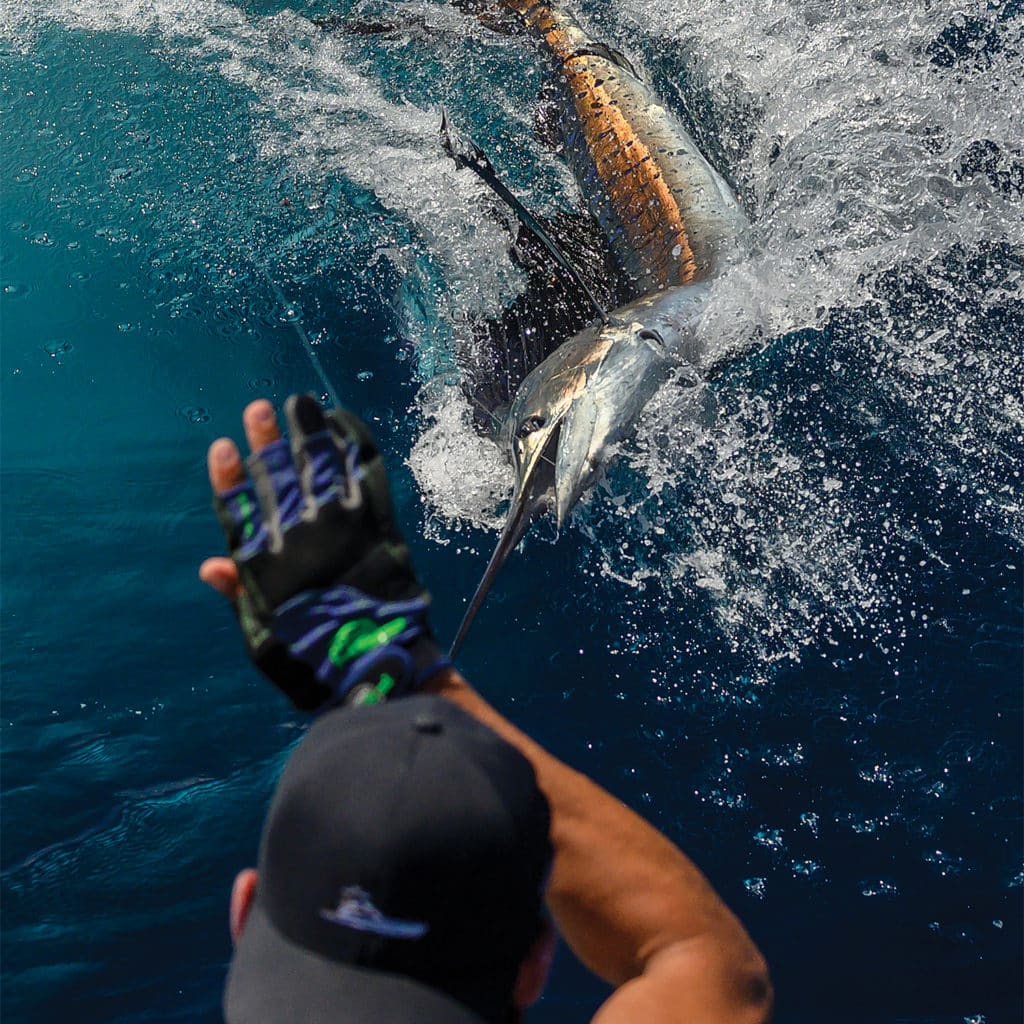
The Keys to Victory
“One of the most important things is that we’ve pretty much kept the same team members since we started in 2009,” Carrizosa says. “We fish with Pat Healey, Carmine Galati, and Drew and Eric McDowell, and then we might rotate a few others like Don Gemmell in and out, but those guys are the core of the team.” He also credits longtime Central American stalwart Capt. John LaGrone for his help over the years. “Having Johnny as my mate for all those years really cut down on my learning curve,” he says. “And now that I’m a full-time yacht broker, it’s even harder to come out from behind a desk and be competitive in a series like this, so I rely on him and some of the other guys as much or even more today than in the past.” Having a network of people you can trust is critical, he says. “I like to start pre-fishing the weekend prior to tournament week,” Carrizosa says. “We’ll fish a different area each day and talk to the other boats to find out what they’re seeing on the water as well. You have to talk to the guys down in Quepos and the guys off Carrillo and get a feel for what’s going on over a wide area, then you can start to narrow it down.” And while each Wednesday is a mandatory registration and captains’ meeting, Carrizosa absolutely wants to be on the water, even though it means a much shorter day offshore. “There have been plenty of times where we’ve come across something on Wednesday and gone right back there [the next day] and caught fish,” he says. “Even though it’s basically only a long half-day, it’s really important.”
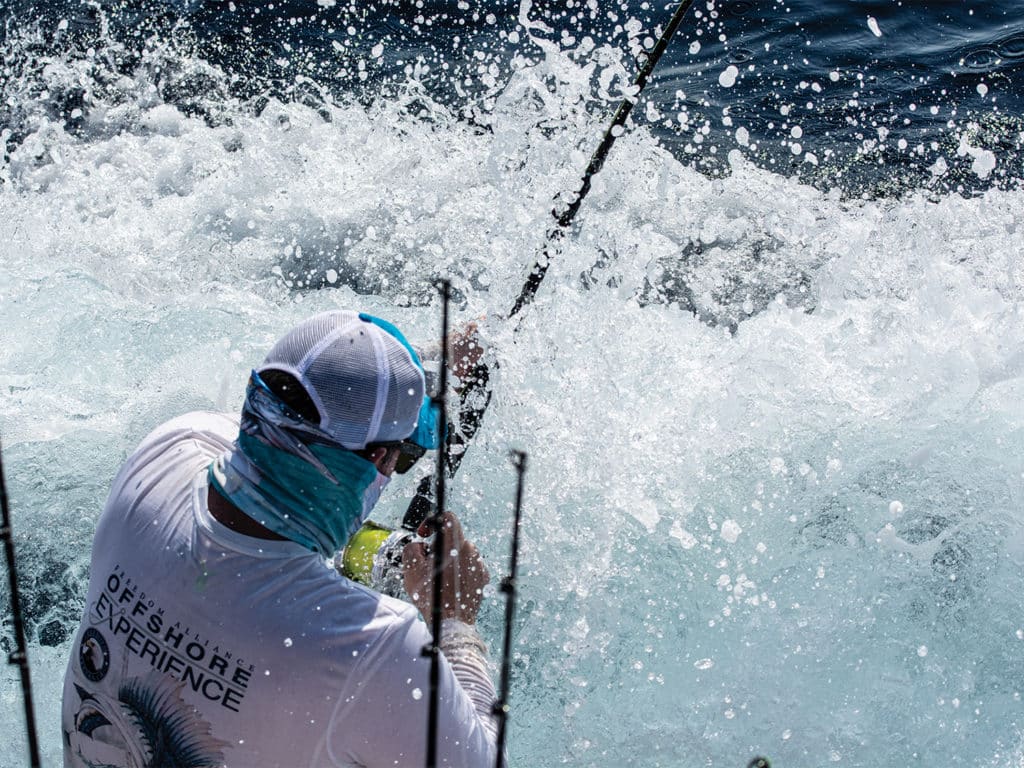
The more-widespread use of omnidirectional sonar in the Los Sueños fleet is another talking point. “For four of the six wins, we didn’t have sonar,” Carrizosa says. “It’s definitely a powerful tool, but Tarheel didn’t have it when they won, and neither did Agitator nor the old Fish Tank, and they all won overall series championships as well as individual legs. You don’t have to have it to be successful.” With that said though, he’s stacking the deck by having Capt. Steve Lassley of Bad Company fame alongside him at the helm for the sole purpose of running Team Galati’s omni sonar. “Having Steve with me lets me concentrate on the fishing and the other boats around me in the fleet,” he says. “When he jumps off the chair or punches me in the arm, I know something’s happening.”
Read Next: Meet Roy Merritt in our exclusive interview.
Moving Forward, Moving On
So what does the future hold for the Signature Triple Crown? First up, the ladies. “We have seen an increase in the number of female anglers over the years,” Royster says. “As the resort has grown and matured, so has the community—it’s become a thriving mecca for families to enjoy hobbies on and off the water, with the luxury of being able to come back at the end of the day to their home away from home. As the number of female anglers increased, their skills have gotten better, and they are eager to compete alongside the men and against each other.” The 2021 Ladies Only Tournament will be its third-annual event; because of its overwhelming popularity, they have modified the format from a one-day tournament held before the first leg to a one-day contest held prior to each of the three legs.
“In the end, to us sport fishing is about camaraderie and making memories,” Royster says. “Participating in tournaments is about friendly competition among peers who enjoy the same hobby. It’s a family sport that is also generational, and Los Sueños is thrilled to be a place for people to enjoy it and share their love of the outdoors with that next generation.”
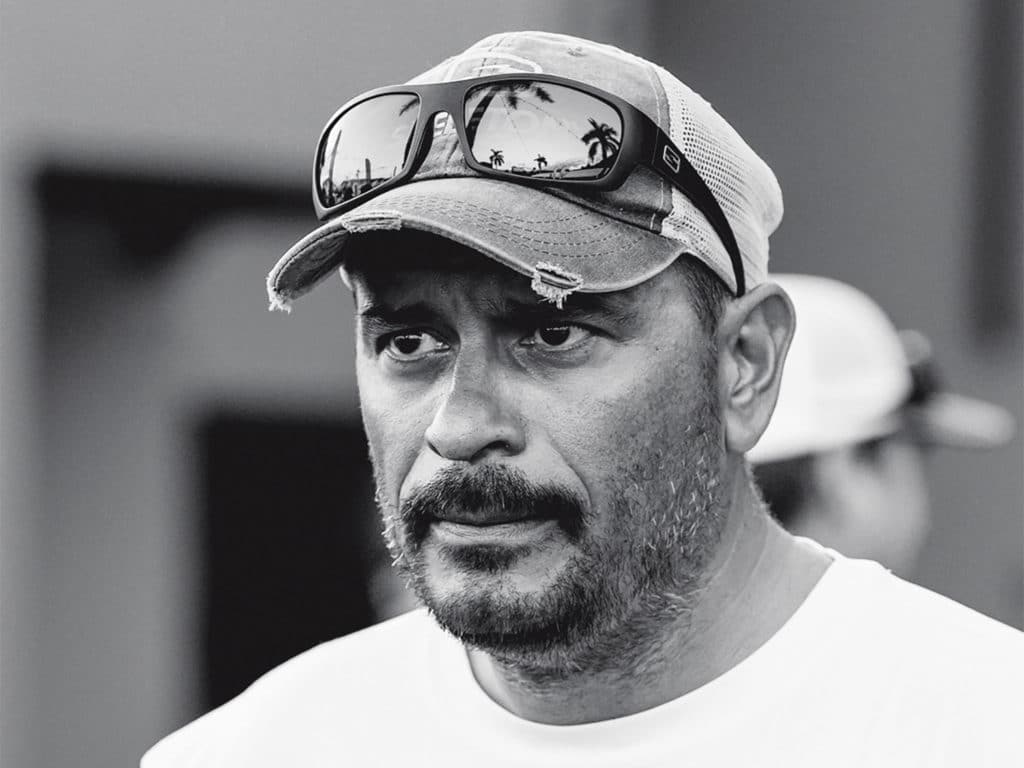
Los Sueños Signature Triple Crown Series Champions
To claim the title of overall series champion, a team must be at the very top of their game—consistency is the passport to victory.
- 2004: No Winner
- 2005: Capt. Dave Noling, Double Trouble
- 2006: Capt. Daniel Espinoza, Spanish Fly
- 2007: Capt. Tony Carrizosa, Stephanie Lee
- 2008: Capt. Rusty Nixdorf, Prime Time
- 2009: Capt. Cristian Campos, Clean Sweep
- 2010: Capt. Ronnie Fields, Big Oh
- 2011: Capt. Jimmy Kitchell, Gotcha
- 2012: Capt. Ronnie Fields, Bandolera
- 2013: Capt. Tucker Smith, Dragin Fly
- 2014: Capt. Andy Helms: En Joy
- 2015: Capt. John Bayliss, Tarheel
- 2016: Capt. Jon Duffie, Agitator
- 2017: Capt. Jon Duffie, Agitator
- 2018: Capt. John Bayliss, Tarheel
- 2019: Capt. Ben Horning, Fish Tank
- 2020: To Be Determined in 2021 Series




